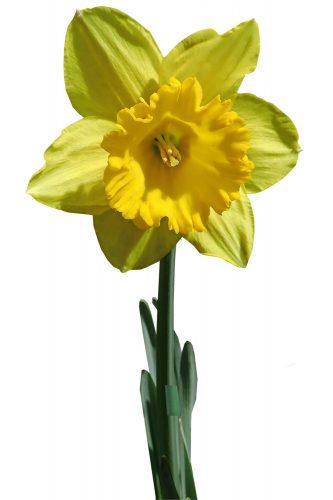
Why should you be thinking about spring flowering bulbs in August?
Because the best time to order bulbs for fall planting and spring bloom is right around now. Years ago, you could find quite a variety of bulbs at local stores and nurseries, but that was then. Now you’ll see only the most ordinary varieties at bricks-and-mortar retail. You must request catalogues or go online to find a full range of offerings.
There are many reliable companies that will ship bulbs to your address some time in September or October. I have used only two companies in recent years: John Scheepers (johnscheepers.com) and McClure & Zimmerman (mzbulb.com). Both offer a wide variety of bulbs, though their printed catalogues are very different.
Scheepers’ is glossy and has color pictures. M&Z’s catalog has only line drawings. Is one better than the other? I can’t say. But M&Z is the go-to general catalog for bulb enthusiasts, offering a great selection that includes less commonly planted types. Its print catalog has a bit of old-world charm about it, too. M&Z’s does show color photographs online, in addition to a facsimile of the print catalogue.
If planting bulbs is a new venture for you, I suggest starting with narcissi, commonly known as daffodils. Plant the bulbs as soon as they arrive. Most will reliably come back year after year and multiply, provided they get enough sun and moisture in spring while their foliage is growing. The flowers are mostly yellow, cream or white, but daffodils come in many shapes and sizes.
I would start with those in the cyclamineus group. They are petite, sturdy and weather-resistant, much less likely than taller, heavy-headed daffs to be flattened by wind and rain. The long-lasting flowers come in a variety of forms and color combos, and they all have loads of character.
Cyclamineus daffodils are hybrids descended from the species Narcissus cyclamineus, a tiny and highly distinctive daff with a sharply backswept perianth (that’s the part of the flower that looks like a ring of petals).
The classic cyclamineus variety is ‘February Gold,’ bred around 1923 and still a great performer. The central cup (or corona) flares at its opening and is slightly deeper in color than the sulfur yellow perianth.
Many newer varieties show more contrast in color between cup and perianth. In the popular variety ‘Jetfire,’ for example, the minimally flared cup is decidedly reddish orange. In other varieties the perianth may be cream or white, while the cup can be gold, orange, cream or pink.
Some growers place the ubiquitous little ‘Tete-a-Tete’ in the cyclamineus group. This one is often forced into early bloom and offered for sale in crowded little nursery pots in late winter. Transplanted to the garden, ‘Tete-a-Tete’ will develop more vibrant color in future years and multiply prodigiously. Although it carries two or three blossoms to a stem, I find it a bit lacking in charm.
My charm award goes to ‘Rapture’, a small pure yellow variety that, with its sharply reflexed perianth and narrow cup, resembles N. cyclamineus more than any other of these hybrids. It reminds me of an eager puppy with its ears blowing back in the wind.
Rachel Foster lives and gardens in Eugene. She can be reached at rfoster@efn.org